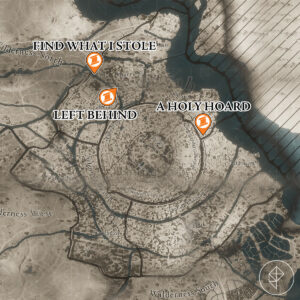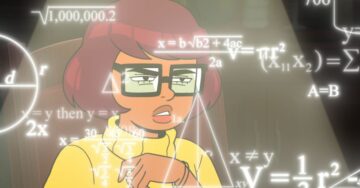While exploring a garden in Pikmin 4, I found a tube of something called “refreshing goo.” As I instructed my small army of Pikmin, the flower-headed creatures who helped me carry things around the world, to bring it back to my spaceship, I wondered what it was — toothpaste, maybe? It was only later when I read the item’s in-game record that I realized it was actually blue paint, which the record described thusly: “Neither the color of the sky nor the color of the sea. Though it is nearly the color of both.”
Pikmin 4 is a game for those who want to take small things too seriously. This has been true of the whole series, which has always defied its initial appearance as kids’ games focused on exploration. The first game was hardcore: You had to direct your Pikmin to complete collecting missions before Olimar, your space explorer, expends his 30 days of oxygen on a foreign planet. Each new game followed the same formula, though each iteration less tensely, and with less time pressure. For the first time, in Pikmin 4, you’re not playing as Olimar but as the recruit to the space program who was sent out to rescue him. You explore new levels in order to collect treasures left lying around that give you sparklium, a substance that fuels your spaceship. As you collect more treasure, you unlock more areas and come across castaways, sometimes members of research teams but also tourists who came to this planet, like Olimar, hoping to shake up their lives with a new discovery.
Pikmin 4 not only eschews the first game’s time limit for less harsh daily in-game timers, but it also adds improvements to make keeping track of what you’re doing more streamlined. There’s a rewind function, a “go here” button that Google Maps-es you straight to your destination, and a skill for your dog companion, Oatchi, to sniff out the treasure in your area. It also includes apps that recap the story and show you side missions you have yet to complete, which makes it even easier to do what has always been the main appeal of Pikmin: collecting stuff.
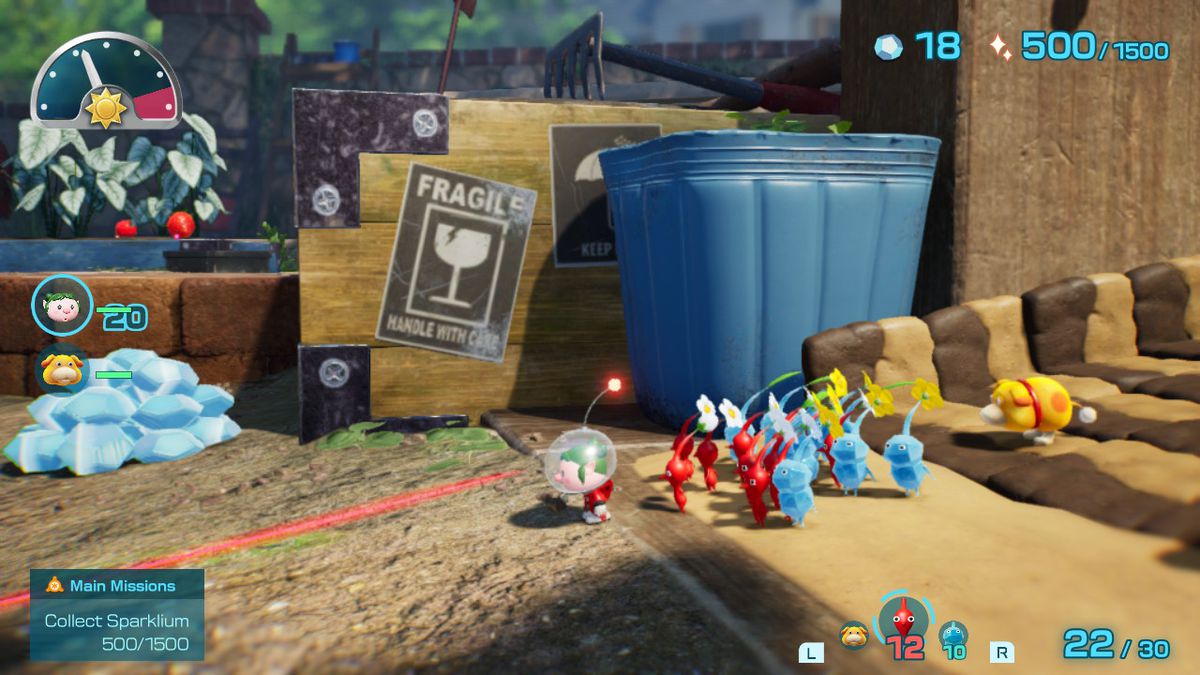
And there is so much stuff to collect. Every mission, side quest, and colorful area has a percentage counter, with subheadings that tell you how much you still have to find. While you only have to collect about half of what’s in a given area to move forward, watching the percentages go up (and getting to read the funny, sometimes emotional item descriptions for treasure you find) is its own reward.
Mechanically, Pikmin 4 is a real-time strategy game that plays like a management sim, and your job is to collect as many things and people (castaways) as you can within a daily time limit. When you have enough Pikmin on your team, you can get jobs going pretty much independently of you, much like you might automate supply lines in Factorio. In-universe, this concept is introduced as the concept of dandori, the prioritization of efficiency on missions. As soon as the fourth day, I was running multiple jobs at once as I traveled back and forth across the map. But the pursuit of more efficient ways of grabbing treasure was never enough to distract me from the world’s beauty, rendered lovingly and with special attention to textures like the surface of water or the petals on a flower.
What did distract me was the combat, in which I partook in scattered encounters throughout the map. Combat usually comes down to just overwhelming the enemy with Pikmin, and it gets repetitive when the solution to many puzzles in later stages is just winning a fight. And unfortunately I run my Pikmin expeditions mercilessly, meaning that I regularly had to hear the cries of my dying soldiers and also my in-game co-workers’ expressions of disgust at my actions. Night expeditions, tower-defense levels that are new to Pikmin 4, are more compelling than the RTS-ish scenarios, but have the same basic issue: The best strategy isn’t to know the area or use a particular Pikmin type, but to err on the side of overwhelming numbers.
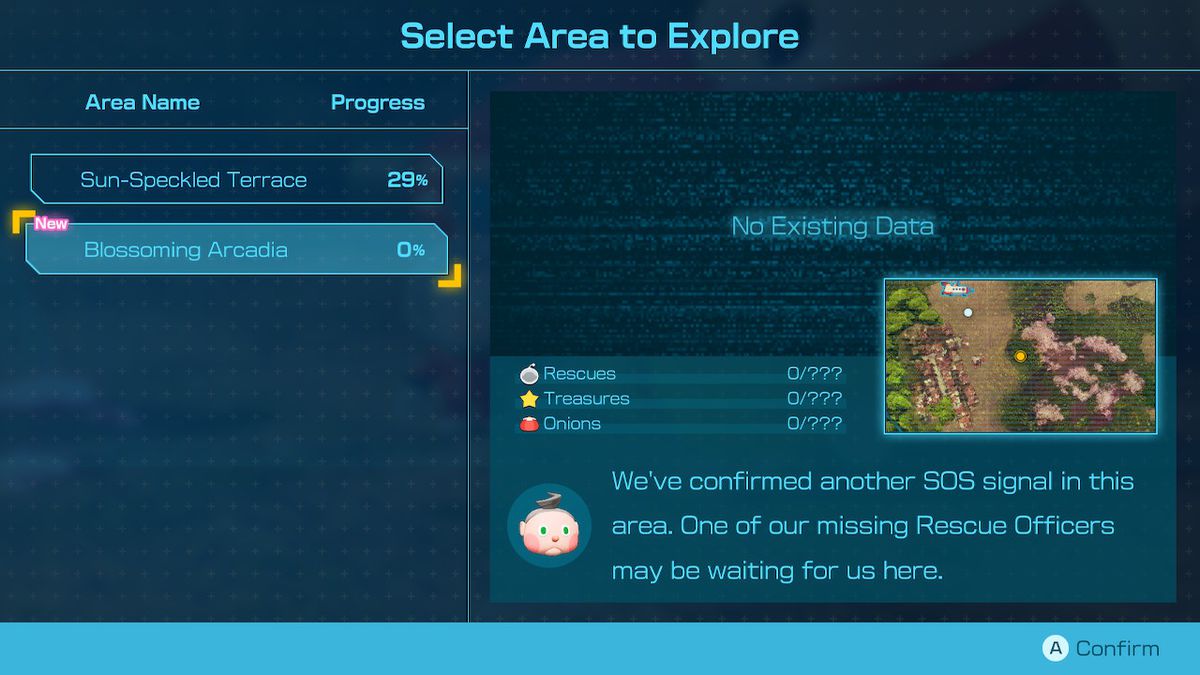
Another major (but good) challenge in the game comes from Dandori Trials, where you have to collect treasures in a specialty level within a set time limit. Unlike the combat encounters, these trials are fresh and intense, and were my favorite part of the game. Getting a bronze medal on my first try in a Dandori Trial felt like winning the Pikmin Olympics. My first run was an opportunity to better understand the arena, while my second onward (and you’ll probably take more than two tries; these are tough!) were my real attempts at collecting absolutely everything in the level. Dandori Trials are perfectly built escape rooms that offer the time pressure the main game mostly forgoes.
These tense minigames were a relief from some of the game’s frustrating micromanagement in other areas. Some of this will be helpful for younger players, such as the action guides that pop up two or three times as you repeat actions. Less appreciated were the responses from the rescue team that give away the solution to some puzzles after you fail them once, rather than letting you figure them out. On the other hand, some things are never explained directly, leaving you to comb through an expedition log or just wait until the research team explains it to you by coincidence. The special properties of certain colors of Pikmin, for instance, sometimes go unexplained until long after you’ve already discovered them through trial and error. The information you need is usually somewhere, but there’s little consistency: tutorials either pop up long after they’ve overstayed their welcome, or in places where you least expect them.
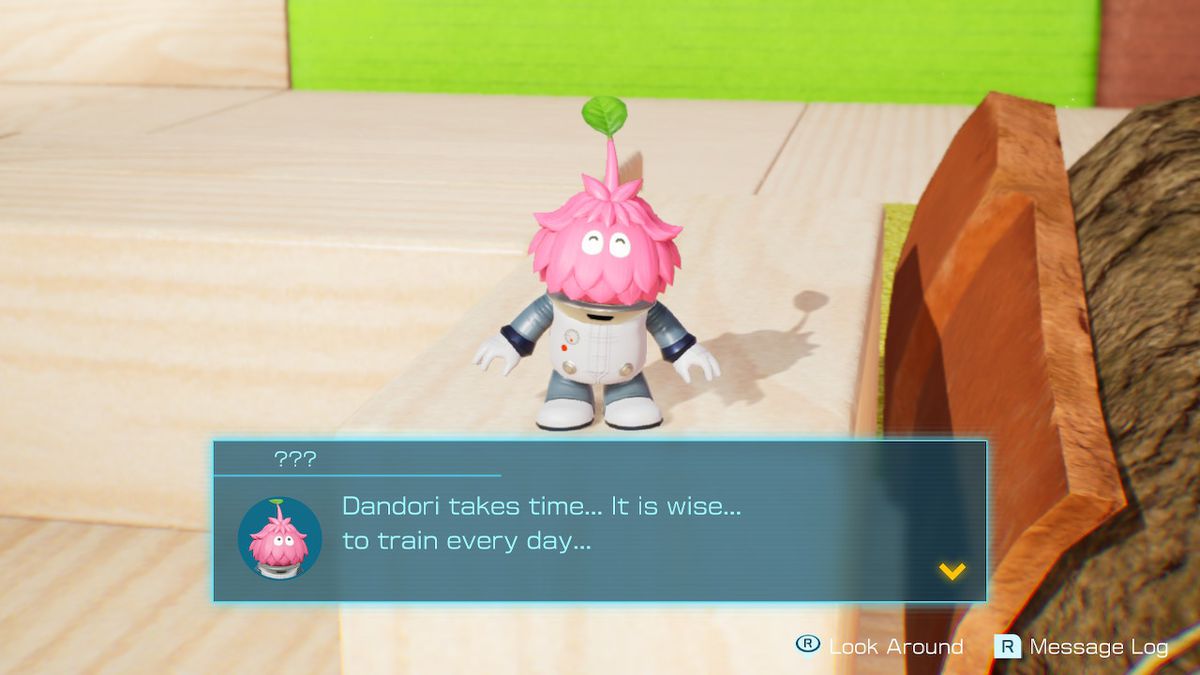
These issues bothered me more as the game went on, when combat started to punish my mistakes and I’d already heard the same pop-up suggestions a dozen times. It sounds like a paradox, but the game is fun when it’s either focused entirely on exploration and puzzle-solving, or when it gives you a restricted goal with a set time limit. Early on, Pikmin 4 keeps its combat and puzzle-solving largely separate; when it brings them together, both halves of the game suffer.
Yet despite these frustrations, the world of Pikmin 4 is so overflowing with cuteness and style that I couldn’t be unhappy for long. Every bark from Oatchi as he ran up to see me, every time a Pikmin babbled happily as it drank nectar from an egg, never failed to make me smile. In its basic gameplay premise of collection, as well as in the little touches that make that premise even more enticing, Pikmin 4 looks at life on Earth from an optimistic perspective. What if advanced alien explorers found joy and usefulness in what we have here — not in our greatest technologies, but in the bits and bobs we forget about in the course of a regular day? I felt drawn to collect all the treasure in Pikmin 4 not just because I wanted to fill out one of my many checklists, but because I wanted to see the game’s reinterpretations of human objects, a catalog full of jokes but also deep appreciation. And in this way, Pikmin 4 accomplishes maybe the best thing a piece of media can do — it makes the real world seem more wondrous than it did before.
Pikmin 4 will be released on July 21 on Nintendo Switch. The game was reviewed on Switch using a pre-release download code provided by Nintendo. Vox Media has affiliate partnerships. These do not influence editorial content, though Vox Media may earn commissions for products purchased via affiliate links. You can find additional information about Polygon’s ethics policy here.
- SEO Powered Content & PR Distribution. Get Amplified Today.
- PlatoData.Network Vertical Generative Ai. Empower Yourself. Access Here.
- PlatoAiStream. Web3 Intelligence. Knowledge Amplified. Access Here.
- PlatoESG. Automotive / EVs, Carbon, CleanTech, Energy, Environment, Solar, Waste Management. Access Here.
- BlockOffsets. Modernizing Environmental Offset Ownership. Access Here.
- Source: https://www.polygon.com/reviews/23792462/pikmin-4-review-coop-treasures-nintendo-switch
- :has
- :is
- :not
- :where
- $UP
- 1
- 220
- 28
- 30
- 7
- 8
- 9
- a
- About
- absolutely
- across
- Action
- actions
- actually
- Adds
- advanced
- Affiliate
- After
- alien
- All
- already
- also
- always
- an
- and
- appeal
- appreciation
- apps
- ARE
- AREA
- areas
- Arena
- Army
- around
- AS
- At
- Attempts
- attention
- automate
- away
- back
- basic
- BE
- Beauty
- because
- been
- before
- BEST
- Better
- Blue
- both
- bring
- Brings
- built
- but
- button
- by
- called
- came
- CAN
- Can Get
- carry
- catalog
- certain
- challenge
- character
- code
- coincidence
- collect
- Collecting
- collection
- collector
- color
- colorful
- combat
- come
- comes
- commissions
- companion
- compelling
- complete
- concept
- content
- Counter
- course
- daily
- day
- Days
- deep
- defied
- described
- Despite
- destination
- DID
- direct
- directly
- discovered
- discovery
- do
- Dog
- doing
- down
- download
- dozen
- drawn
- Dying
- each
- Early
- earn
- earth
- easier
- Editorial
- efficiency
- efficient
- either
- enough
- enticing
- entirely
- error
- escape
- Ether (ETH)
- ethics
- Even
- Every
- everything
- expect
- explained
- Explains
- exploration
- explore
- explorer
- Explorers
- Exploring
- expressions
- FAIL
- Failed
- Favorite
- fight
- Figure
- fill
- Find
- First
- first time
- flower
- focused
- followed
- For
- foreign
- foreign planet
- formula
- forth
- Forward
- found
- Fourth
- fresh
- from
- frustrating
- Frustrations
- fuels
- full
- fun
- function
- funny
- game
- gameplay
- Games
- Garden
- get
- getting
- Give
- given
- gives
- Go
- goal
- going
- GOO
- good
- greatest
- Guides
- had
- Half
- hand
- hardcore
- Have
- he
- hear
- heard
- helped
- helpful
- here
- him
- his
- hoping
- How
- http
- HTTPS
- human
- i
- if
- improvements
- in
- In other
- in-game
- includes
- independently
- influence
- information
- initial
- instance
- into
- introduced
- issue
- issues
- IT
- iteration
- ITS
- Job
- Jobs
- jpg
- July
- just
- keeping
- Know
- largely
- later
- least
- leaving
- left
- less
- letting
- Level
- levels
- Life
- like
- LIMIT
- lines
- links
- little
- Lives
- log
- Long
- LOOKS
- Main
- major
- make
- MAKES
- management
- many
- map
- May..
- maybe
- me
- meaning
- Media
- Members
- might
- Mission
- missions
- mistakes
- more
- more efficient
- mostly
- move
- move forward
- much
- multiple
- my
- nearly
- Need
- never
- New
- Newsletter
- night
- Nintendo
- Nintendo Switch
- nor
- Notes
- numbers
- objects
- obsessive
- of
- offer
- olympics
- on
- once
- ONE
- only
- Opportunity
- Optimistic
- or
- order
- Other
- our
- out
- own
- Oxygen
- paint
- Paradox
- part
- particular
- partnerships
- Patch
- patch notes
- People
- percentage
- perspective
- piece
- Places
- planet
- plato
- Plato Data Intelligence
- PlatoData
- player
- players
- playing
- plays
- policy
- Polygon
- Polygon’s
- pop
- pop-up
- pressure
- pretty
- prioritization
- probably
- Products
- Program
- properties
- protagonist
- provided
- purchased
- pursuit
- Puzzles
- quest
- rather
- Read
- real
- real world
- real-time
- realized
- recap
- record
- recruit
- regular
- regularly
- released
- relief
- repeat
- repetitive
- rescue
- research
- responses
- restricted
- reviewed
- Reward
- Rewind
- Rooms
- roundup
- Run
- running
- same
- scattered
- scenarios
- Screen
- SEA
- Second
- see
- seem
- sent
- separate
- Series
- seriously
- set
- show
- showing
- side
- side quest
- sign
- SIM
- skill
- sky
- small
- So
- solution
- some
- something
- somewhere
- Soon
- Space
- special
- Specialty
- stages
- started
- Still
- Story
- straight
- Strategy
- streamlined
- style
- substance
- such
- supply
- Surface
- Switch
- Take
- team
- teams
- Technologies
- tell
- tells
- than
- that
- The
- The Area
- the information
- the world
- their
- Them
- Themed
- There.
- These
- thing
- things
- this
- those
- though?
- three
- Through
- throughout
- time
- times
- to
- together
- too
- toothpaste
- track
- traveled
- trial
- trial and error
- trials
- true
- try
- TURN
- tutorials
- two
- type
- understand
- unfortunately
- unlike
- unlock
- until
- use
- using
- usually
- via
- VOX
- vox media
- W3
- wait
- want
- wanted
- was
- watching
- Water
- Way..
- ways
- we
- webp
- weekly
- welcome
- WELL
- went
- were
- What
- when
- which
- while
- WHO
- whole
- will
- winning
- with
- within
- world
- world’s
- XML
- yet
- you
- Younger
- Your
- zephyrnet





